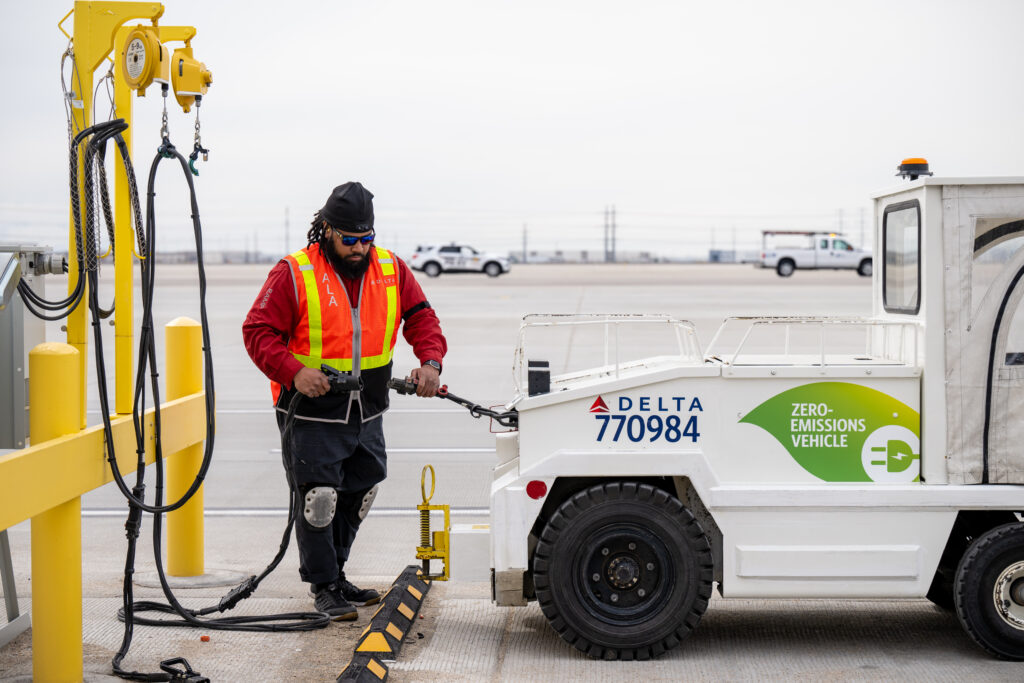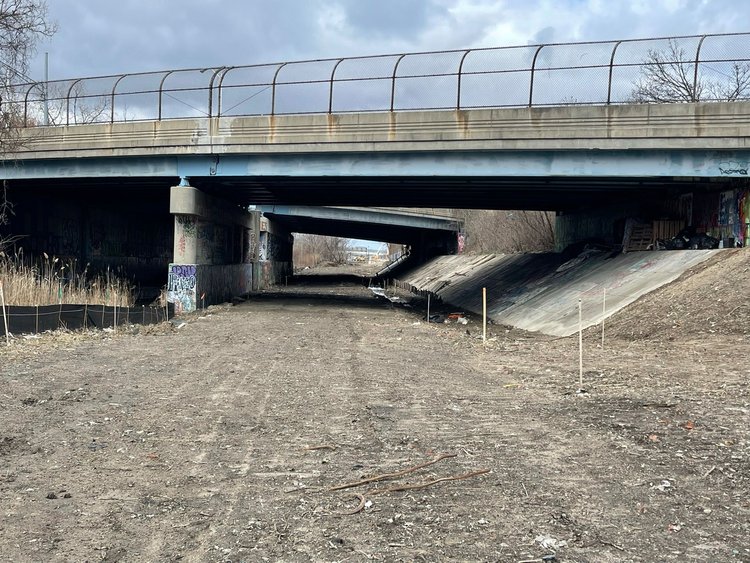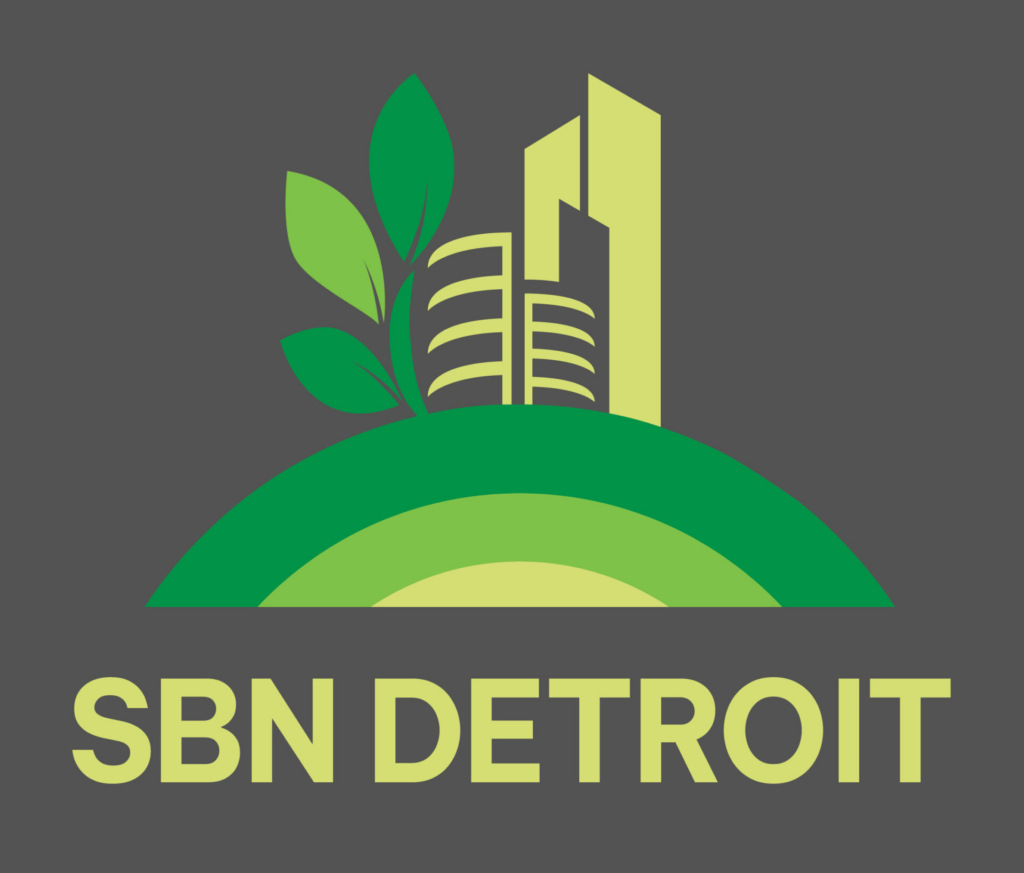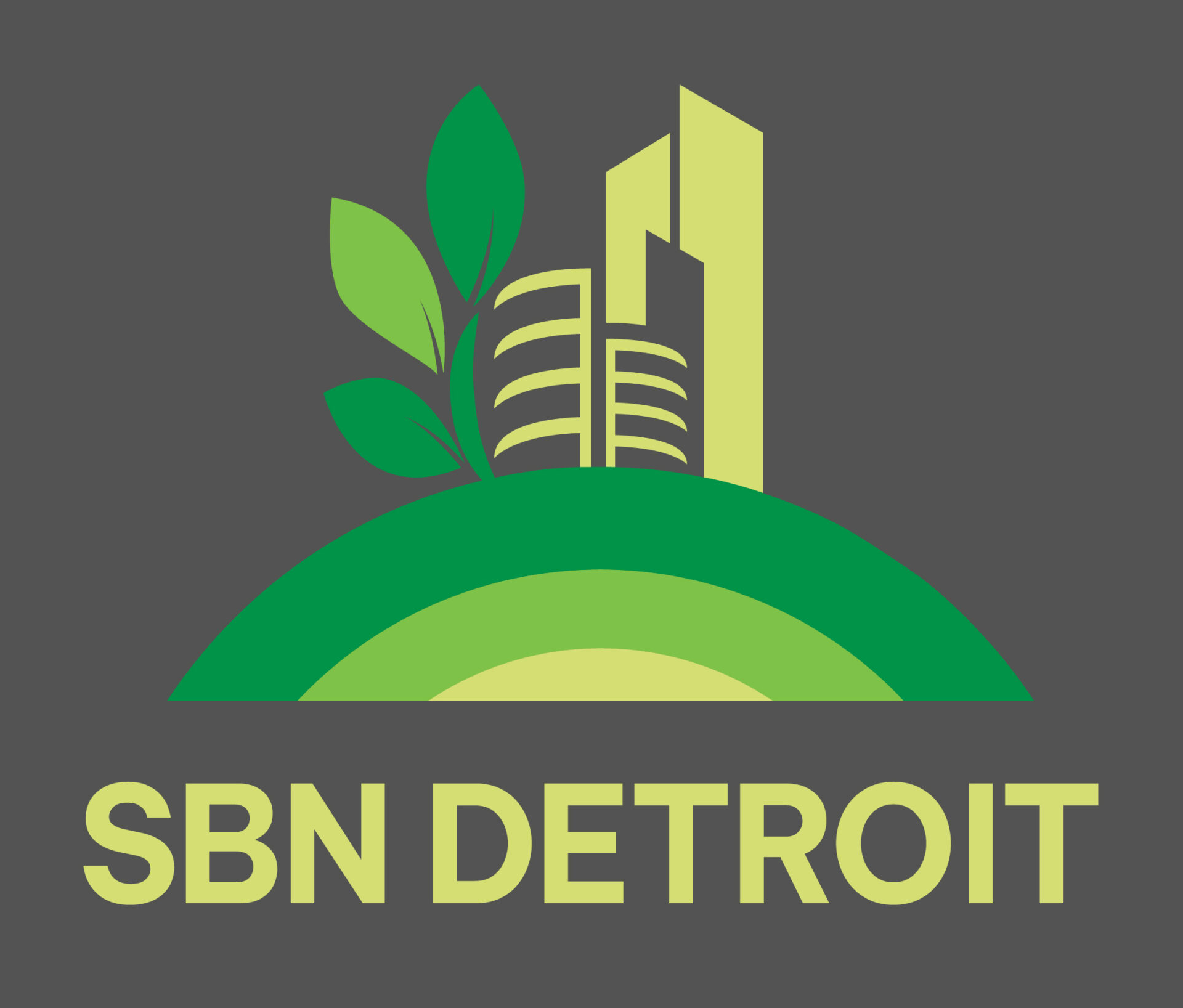Urban Farming in Detroit

Planted Detroit is a vertical farming company located in the heart of the city, dedicated to redefining the way fresh produce is grown and distributed. By leveraging Controlled Environment Agriculture (CEA) and a commitment to biosecurity, the company focuses on producing high-quality greens year-round while minimizing environmental impact. Its model aims to ensure fresher, longer-lasting food while reducing the carbon footprint associated with traditional farming and long-distance transportation. SBN Detroit interviewed CEO and founder Tom Adamczyk to discuss the company’s sustainability efforts, how vertical farming plays a role in reshaping the food system, and what this means for businesses and consumers in Southeast Michigan. Q: Your background is in finance – what prompted the shift to develop Planted Detroit? A: Yes, my background is in capital markets and finance, particularly mergers, acquisitions, and investment management. Part of that work involved identifying emerging technologies and investment opportunities, with a specific focus on agriculture and sustainability. Through this research, I began looking at broader issues within the food supply chain and seeing systemic issues. Consumers are often paying higher prices for food that is lower in quality, and much of that is due to inefficiencies in how food is grown, transported, and distributed. A significant portion of fresh produce travels thousands of miles before reaching grocery stores, which impacts its nutritional value and shelf life while increasing costs and environmental impact. In 2016–2017, I started researching alternative agricultural models, including controlled environment agriculture. Vertical farming stood out as a viable approach to addressing these challenges. Rather than just investing in the sector, I wanted to fully understand how to make vertical farming both sustainable and economically viable – and be a part of it. That led to the launch of Planted Detroit in 2018. Q: Why did you choose vertical farming as your model? What advantages does it offer in terms of sustainability? A: I evaluated multiple controlled environment agriculture models, including greenhouse farming but determined that vertical farming had more scalability potential in urban environments and was more aligned with what I think needs to be done on a large scale for mass food production. The ability to grow vertically also makes it possible to produce more food within a smaller physical footprint. Compared to traditional farming, this method uses fewer natural resources while maintaining consistent production levels. Q: How do you approach energy efficiency in vertical farming? A: When I first started researching vertical farming, LED lighting technology was still evolving. The legalization of cannabis led to significant advancements in this area, as companies like GE and Philips invested in more efficient, cost-effective grow lights. This helped drive down costs and improve performance, making vertical farming more viable at scale. LED lighting systems now allow for adjustments to optimize plant growth and energy use. These new lighting systems generate less heat, which means we only use and pay for the photons needed for plant growth. One of our lights allows us to tune the spectrum from red to blue, which not only impacts the plant’s taste and growth but also improves energy efficiency. Q: How does vertical farming contribute to a more sustainable food system in Southeast Michigan? A: One of the primary challenges in food systems is access to fresh, high-quality produce, and locally based food production can play a role in improving availability. Growing food year-round in a climate like Michigan’s is an advantage in itself. Seasonal limitations often mean that fresh produce must be imported from across the country. By producing food locally, we can shorten the time between harvest and consumption, helping to preserve both nutritional value and quality. In the long term, the goal is to establish a model where fresh, nutrient-rich food is widely accessible, whether through direct-to-consumer sales, grocery stores, or partnerships. Q: What other sustainability practices are in place at Planted Detroit? A: As I mentioned, energy efficiency is a key consideration, both from an environmental and operational standpoint. Lighting and climate control systems are continuously optimized to minimize energy consumption while maintaining stable growing conditions. Water usage is another critical factor. Vertical hydroponic systems allow for 95% less water consumption compared to traditional farming methods. Our system feeds the plants at their root systems with nutrient-dosed water that is then recirculated and cycled back through the plants. This saves a lot of water. In terms of waste management, growing media is used only once per crop cycle and then composted. Local organizations, including Sanctuary Farms, repurpose the composted material, creating a closed-loop system that supports other agricultural efforts in the area. Food waste is also minimized. Any excess products that cannot be sold are donated through Food Rescue U.S. to prevent unnecessary landfill contributions. Packaging materials are continuously evaluated to maximize recyclability. Q: How does Controlled Environment Agriculture (CEA) compare to traditional farming in terms of resource efficiency? A: Water conservation is one of the most significant benefits. With increasing climate challenges, particularly droughts, the ability to grow food using a fraction of the water required by traditional agriculture is an important factor. Energy consumption is often discussed in relation to CEA, as artificial lighting does require electricity. However, when considering the entire supply chain—including long-haul transportation, refrigeration, and food spoilage—vertical farming presents efficiencies that help offset its energy use. Additionally, because production is demand-driven, it reduces overproduction and associated waste. Q: How do vertical farming and a shorter supply chain benefit businesses and consumers? A: Reducing the number of steps between food production and consumption improves both freshness and sustainability. My goal is farm-to-fork. People should be able to buy their food directly from the farm and put it in their refrigerator. With urban farming, food can be harvested and delivered within a short timeframe, preserving its quality and reducing spoilage. While scaling this model presents logistical challenges, it represents a shift toward a more localized and efficient food system. Q: Who are your main customers, and how do they influence your sustainability goals? A: Most of our customers
Delta: Working Toward Net Zero Through Sustainability, Climate Impact

Delta Air Lines employs 95,000 people and operates 4,000 flights a day, flying to more than 280 destinations on six continents, and expects to serve nearly 200 million customers this year. 13.7 million passengers flew in or out of Detroit Metro Airport in 2022, making it Delta’s third-largest hub. We interviewed Gail Grimmett, Delta’s senior vice president of sustainability performance and strategic partnerships, to learn more about the airline’s sustainability strategy. Q: How does Delta approach sustainability? A: We are on a journey to reach net zero by 2050, so we have milestones and smaller goals we are working toward for 2025, 2030, and 2035 to help us get to net zero. Our goals fall into two main pillars. The first is to embed sustainability in everything we do. This allows us to concentrate on things we can control today and allows sustainability to penetrate the entire business. The second is to eliminate our climate impact from flying. This is where our fuel and fleet come into play. So, we focus on these two main pillars and have set key targets and goals for each. Q: What does your sustainability team look like and how is it organized within the company? A: It’s set up to support the pillars. We have councils set up across the organization that work toward our goals. For example, we have a Carbon Council that is led by our chief of operations. This group is focused on innovation and fuel usage, looking for fuel efficiencies and savings Last year we saved 10 million gallons in fuel by weight reduction and by flying in a more efficient manner such as altitude and speed. We have sustainability embedded across the organization working on finding efficiencies and opportunities in areas we can control today. Q: Is sustainability addressed any differently here? A: All airports are different, but because we have great partners with the Airport Authority, we’re able to make changes outside of just our operation, like with LED lighting, low-flow water within the terminal, and within our catering kitchens. Since Detroit is a hub, it is a key airport for us that we look at regularly. We’ve been working on electrifying our ground service equipment (GSE) to convert to 100% electric by 2025 in five of our hubs and 100% in all of our hubs by 2035. Q: What are your short-term sustainability goals? A: In the short term, we are focusing on what we can control within our operation. For example, leveraging our councils to reduce fuel usage by another 10 million gallons this year. By 2035 we expect the Carbon Council to have saved 1.1 billion gallons of fuel, which is important from both a cost and emissions perspective. We are eliminating single-use plastics from planes. We eliminated 4.9 million pounds of plastic from planes as of last year, and on Dec. 5, we announced a new paper cup that we are testing in-flight that once fully rolled out will eliminate another 7 million pounds of single-use plastic. Changes like a new paper cup are no easy task. These cups must handle both hot and cold materials and meet international regulations that can vary from country to country. We’re a global airline, and, operationally, we can’t just stock every aircraft differently based on the countries they travel through. We have to satisfy the sustainability regulations of all countries on all planes. Q: What about longer-term goals? A: We need to be net zero by 2050. That is the goal everyone in the industry is racing toward. To accomplish this, we need to focus on large-scale changes – things like switching to sustainable aviation fuel and hydrogen to power aircraft and building the supporting infrastructure. All this is still being researched and tested. When we think about our fleet – what we fly and how we fly – we are looking at what we can do in the medium term and the long term. For example, each new aircraft we add to our fleet generates around 25% fuel savings, so we are also updating our fleets to be more efficient. Q: What else are you working on to get to net zero by 2050? A: The number one lever we can pull to decarbonize our industry is sustainable aviation fuel (SAF). Currently, there is not enough of it, so we need to ramp up production of it. Today, there is only enough SAF to barely cover one day’s worth of flying for the entire industry. The government and policymakers are important as the production of SAF scales because we need the right policies and incentives to increase production and build the infrastructure to support SAF. While that may seem daunting, a positive is that SAF is an immediate solution – it can be added directly into planes right now. So, while there isn’t enough of it, it can be blended with current fuel, so we can start with 50% SAF and move to 80% and then 100% as the production ramps up. Also, this first-generation SAF won’t be the last. It will continue to evolve. This is one of the most exciting times to be in this field as there is so much need here, and so much innovation happening. Q: I read that you focus on building your fleet to have the longest, most sustainable life possible. Can you tell us more about that? A: Circularity is important to us. We look at refreshing planes, regenerating materials, and recycling. We hold onto our fleet for a long time but continually look at how to be more efficient with the fleet. Adjustments are being made to certain planes to reduce drag, which helps them become more fuel-efficient. This goes back to controlling what we can control while continuing to refresh the fleet as we can. Q: What are the biggest challenges overall? A: There are two. The first is the pace of technology advancement. It needs to speed up and I think it will. And,
Detroit Greenways Coalition’s Todd Scott Talks Greenways and Sustainability

The Detroit Greenways Coalition (DGC) works to promote and build a network of greenways, Complete Streets, and bike lanes that will connect people and places, improve the quality of life, beautify neighborhoods, and stimulate neighborhood-level economic development in Detroit. Its mission is to create, conserve and promote greenways and green spaces to connect people, places, and nature. Its vision is a strong, healthy, vibrant City of Detroit and a region where a seamless network of greenways, green spaces, blueways, and Complete Streets are an integral part of people’s active lifestyles including day-to-day transportation and recreation. SBN Detroit spoke to DGC Executive Director Todd Scott to gain insights about their work. Q: How big of a driver was sustainability for the city of Detroit in the forming of the Greenways Coalition? A: In the beginning, we had to tackle more basic issues about how to build and maintain greenways across the entire city and how to make green transportation easier and safer. Our vision was certainly supporting sustainable transportation and green space, but we were focused initially on more basic issues. Some examples here are developing a citywide greenway network vision, advocating for redesigned city streets that better accommodate green transportation, and finding the resources to make this all a reality. Over time we’ve been able to move beyond these issues and push sustainability more, especially in light of the need for Climate Action – reducing transportation carbon emissions and providing green stormwater management. Q: The vision of the Greenways Coalition is ultimately to connect every neighborhood over time. Please speak to how this impacts the city in terms of sustainability from these aspects: Environmental: Greenways and Complete Streets (i.e. streets designed to safely accommodate all users) can do more than provide green transportation. They can help manage stormwater through green stormwater infrastructure, street trees, and even de-paving roads. They can also reduce urban heat island effects. Flooding and extreme heat are big issues in Detroit that our work can help address. Transportation/Mobility: The most important impact is how these connections help Detroiters use green transportation. That’s not just walking and biking, but public transit as well. They provide safe and convenient routes that connect schools, jobs, parks, retail areas, and more. Economic: There are many examples of greenways and Complete Streets driving economic urban revitalization around the world. Locally, there may be no better example than the Livernois Avenue of Fashion. The streetscape project reduced vehicle travel lanes (and speeding), widened sidewalks, and added bike lanes. Businesses along the route have flourished. There is a tremendous opportunity for additional retail revitalization along the 27-mile Joe Louis Greenway. It will be interesting to see how places like the Oakman/Grand River strip and even Downtown Hamtramck increase business activity as a result of the greenway and the bike and pedestrian traffic that it brings. Social/Inclusivity: Biking and walking can be very social. We’ve seen this with the numerous biking and walking clubs that have formed across the city over recent years, but especially during COVID. Greenways and Complete Streets support these club events that are open to everyone. Q: Does the Greenways Coalition have a set of sustainability goals? A: What we largely do is advocate for institutions to have sustainability goals. We’ve done that with the City of Detroit through their Sustainability Action Agenda. We’ve been heavily involved in the carbon neutrality discussion at the state level through the MI Healthy Climate Plan. We’ve even weighed in on federal issues, such as the recently proposed U.S. DOT Greenhouse Gas Emissions rule. You could say our agenda is to get sustainability incorporated at the institutional level so that it leverages the benefits of our vision. Q: From a sustainability standpoint what are the direct benefits the Greenways offer to Detroit residents? A: The largest direct sustainability benefit is transportation. Greenways provide “green ways” to get to destinations around the city and to connect with public transportation. The “green” in greenways has multiple meanings. It’s more than just landscaping, it’s about sustainable transportation. It’s also about saving some “green,” e.g. money. Sustainability can benefit Detroiters, but that benefit must also improve the financial sustainability of the household budget. Vehicle transportation can eat up a large portion of that budget. Greenways can benefit many and reduce that burden. Be sure to subscribe to our newsletter for regular updates on sustainable business practices in and around Detroit.


